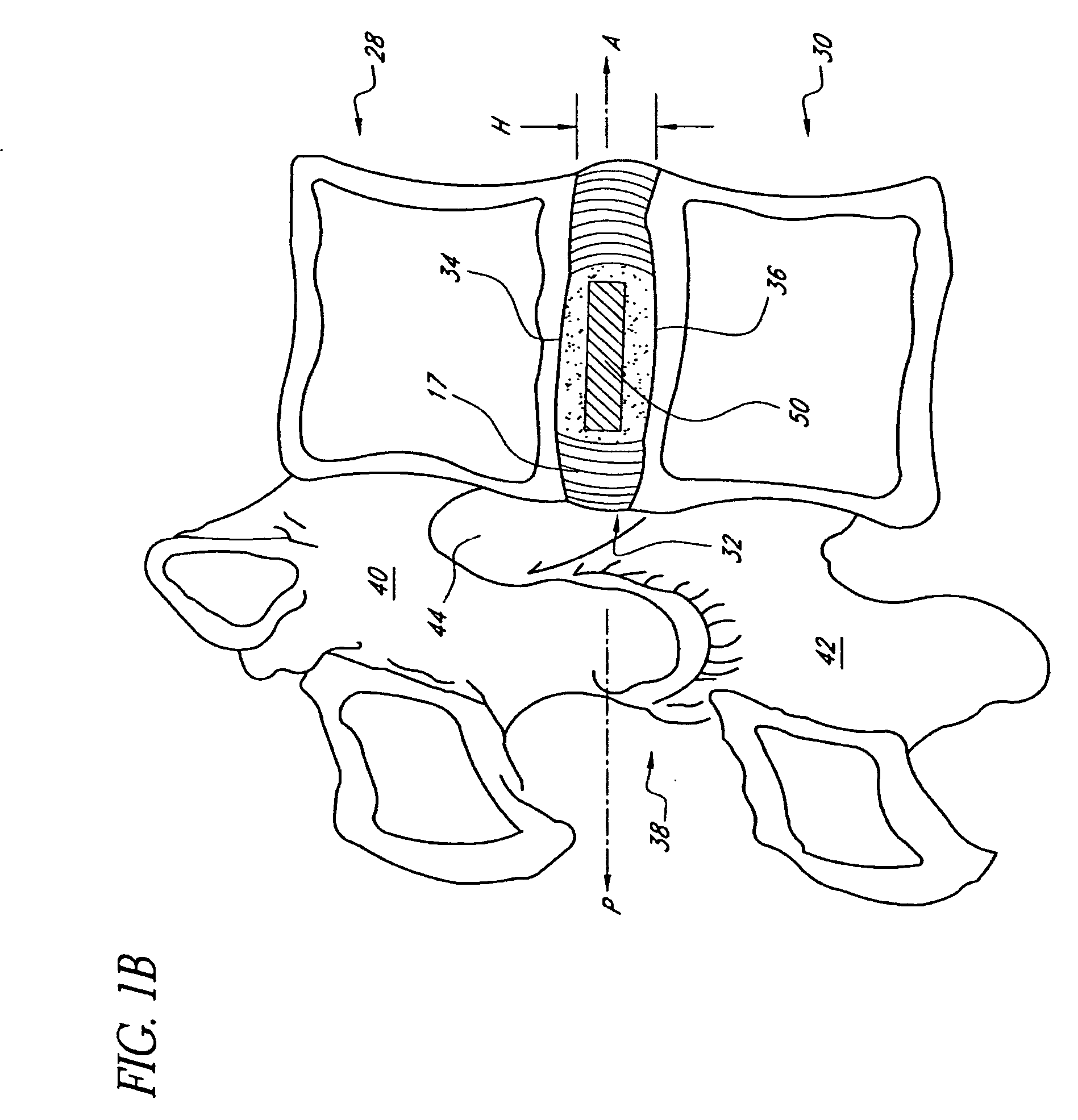Method of monitoring characteristics of an intervertebral disc and implantable prosthetic
a technology of intervertebral discs and characteristics, applied in the field of vertebral disc treatment, can solve problems such as patient slipping
- Summary
- Abstract
- Description
- Claims
- Application Information
AI Technical Summary
Benefits of technology
Problems solved by technology
Method used
Image
Examples
Embodiment Construction
[0054] Loss of vertebral disc tissue, such as NP, deflates the disc, causing a decrease in disc height. Significant decreases in disc height have been noted in up to 98% of operated patients. Loss of disc height increases loading on the facet joints, which may result in deterioration of facet cartilage and ultimately osteoarthritis and pain. As the joint space decreases, the neural foramina formed by the inferior and superior vertebral pedicles also close down which could lead to foraminal stenosis, pinching of the traversing nerve root, and recurring radicular pain. Loss of NP also increases loading on the remaining AF, and can produce pain. Finally, loss of NP results in greater bulging of the AF under load, which may result in renewed impingement by the AF on nerve structures posterior to the disc. Removal of NP may also be detrimental to the clinical outcome of disc repair.
[0055] Applicants own U.S. Pat. Nos. 6,425,919; 6,482,235; 6,508,839 and Published U.S. patent application...
PUM
| Property | Measurement | Unit |
|---|---|---|
| height | aaaaa | aaaaa |
| height | aaaaa | aaaaa |
| height | aaaaa | aaaaa |
Abstract
Description
Claims
Application Information
 Login to View More
Login to View More - R&D
- Intellectual Property
- Life Sciences
- Materials
- Tech Scout
- Unparalleled Data Quality
- Higher Quality Content
- 60% Fewer Hallucinations
Browse by: Latest US Patents, China's latest patents, Technical Efficacy Thesaurus, Application Domain, Technology Topic, Popular Technical Reports.
© 2025 PatSnap. All rights reserved.Legal|Privacy policy|Modern Slavery Act Transparency Statement|Sitemap|About US| Contact US: help@patsnap.com



